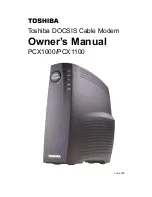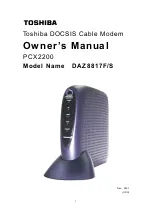
d15 Modem Integration and Application Developers Guide version draft 0.53 Page 80 of 181
6.2.6 Application Software
Tests need to verify the communications links between the host and the modem and
between the modem and the network, as follows:
Software Driver Configuration
Ensure that the host product can enable the modem serial port to permit the host and modem to
communicate. This test verifies that the driver software functions well and is configured properly.
Network Configuration
Determine if the host can use the modem to communicate with a GSM
â
network. This test uses
existing network software in an attempt to communicate with a specific network.
NOTE: Make sure the d15 is set to the correct band.
The final application must be able to respond correctly under all adverse network conditions, not
just the ideal case. To achieve this, the application software has to be systematically tested against
all possible failure and exception conditions. Situations such as low battery, out of range, host
down, unexpected data, maximum message size, maximum peak/sustained throughput, and other
conditions must not cause the host application to fail. Each condition must have a specific
remedial action to alleviate it.
6.3 Final
Assembly
A final assembly test is performed before shipment to ensure all components are working properly and
issues such as crimped antenna cables, lose connections, and improper software load are resolved. During
final assembly, the modem sends and receives a loopback message of maximum size. The successful return
of the sent message proves the product can transmit and receive correctly.
6.3.1 End User Problem Resolution
When the final product is in the hands of the end user, testing must quickly isolate the cause of the
problem in the field. For example, is the problem caused by the terminal, the modem, the network,
the configuration, or a user error? Can the problem be fixed locally or does the unit need to be sent
to the service shop?
It is very time consuming and expensive to send products to the service shop, especially if the
problem is caused by a temporary network or host outage. For this reason, you should design the
application to allow for end-user problem determination. Often this functionality can be designed
co-operatively with the Help Desk, which supports the user
over the telephone and without access to the user’s screen. The application must enable the end
user to relate the most likely cause of the problem to the Help Desk for a quick solution.
Effective tests provide a systematic, positive acknowledgment from each of the network
components. For example:
Test 1
Is the OEM module able to pass its own self test?
Test 2
Is the OEM module able to communicate with peripherals?
Test 3
Is the OEM module able to communicate with the integrated modem?
Test 4 Is the modem able to hear the network?
Test 5
Is the modem registered and allowed to operate on the network?
Test 6
Is the gateway (if present) up and running?
Test 7 Is the host up and running?
















































